I am running a LME (Linear Mixed-Effects regression) in R where the knot is determined by the time of diagnosis (t=0). So the model is now:
lme(function ~ age+sex+timepre*marker+timepost*marker, random=~time|ID, data=data)
Thus: timepre is where everything from t=0 is 0 and before that is 0-time, and timepost is where everything before diagnosis is 0 and afterwards is 0+time. The time is the combination of timepre and timepost.
I now wanted to plot these effects using the sjPlot library as it nicely gives the predicted values (corrected for covariates) and having this as a plot where one could see the knot at t=0.
plot_model(model, type="int")
Instead it is plotting two different plots, one for each interaction. Is there a way to combine these plots, so that the slopes before and after come together (the intercepts are also different now)? Or how should I do this?
UPDATE:
After googling more, I found a suggestion to use splines instead of two separate time frames. So, what I tried now is:
lme(function ~ age+sex+bs(time, knots=0, degree=1)*marker, random=~time|ID, data=data)
I am able to plot this with the visreg library and I do seem to get the knot at zero:
Is this correct? Am I correct that the coefficients should be interpreted as follows:
bs(time, knots = 0, degree = 1)1:marker 12.055090 p= 0.0004
bs(time, knots = 0, degree = 1)2:marker 13.750058 p= 0.0133
the first coeff (12.055 and with p-value 0.0004) represents the change in the first slope (before the knot) as a function of the level of the marker? And the second coeff (13.75 with p-value 0.013) represents the difference between the first and second slope as a function of the marker? How then to know if change in the second slope is significant as a function of the marker?

